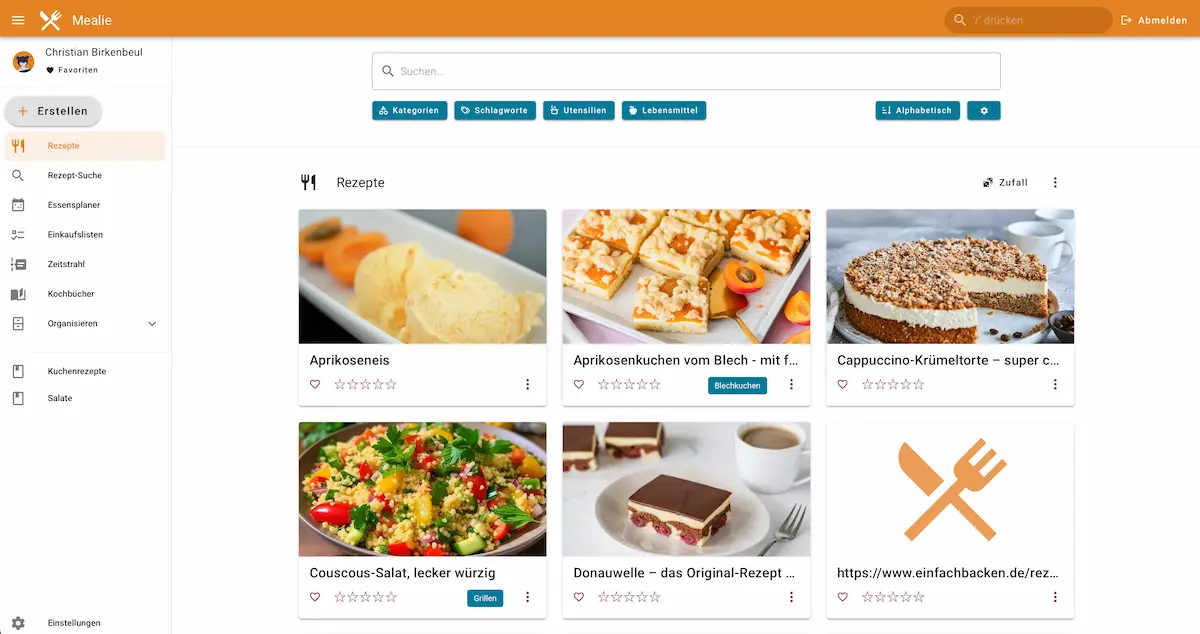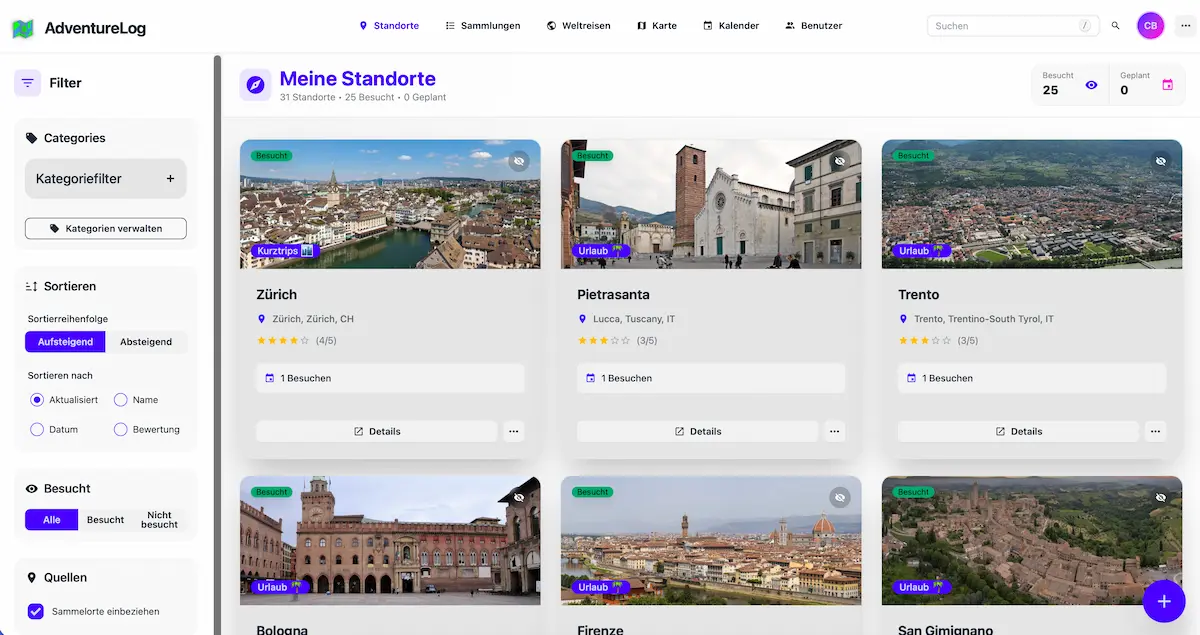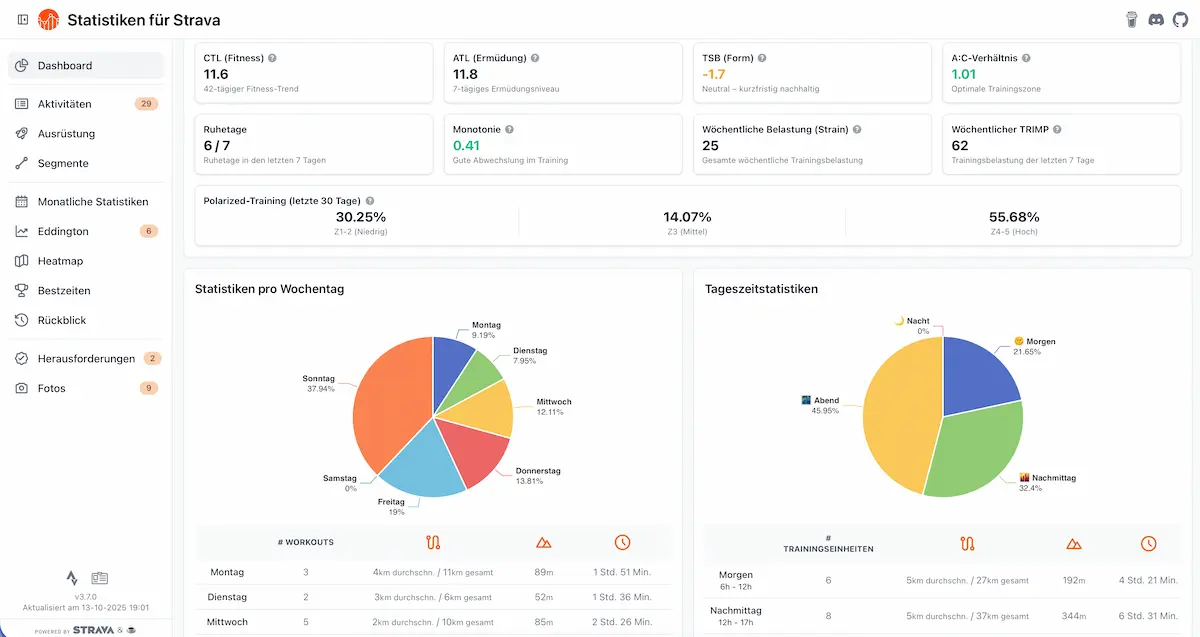My Top 10 Selfhosted & Homelab Software 2025 – Favorite Tools for the New Year
Just like in 2021 and 2024, I’m once again sharing a list of my favorite software products of the year. I always enjoy reading posts like this because you can often discover a few hidden gems. Usually – let’s be honest – these lists are filled with the usual suspects. Nevertheless, this year’s list includes three selfhosted projects that you might not have heard of before.
#10: Wanderer
Let’s start with Wanderer, an app for collecting your hiking routes – basically a selfhosted Komoot. The app itself doesn’t record routes, but you can easily import GPX files or data from Strava or Komoot and enrich them with additional details.
Since one of the latest updates, you can even share your new activities in the Fediverse, making it easy to discover hiking routes from people all over the world.
I like this software because after Komoot’s acquisition and price hikes, I lost interest in using it and went looking for alternatives. Now, when I go hiking, I track the route with Strava and then import it into Wanderer.
9: Nextcloud
Nextcloud really needs no introduction. For me, it’s a bit of a love-hate relationship. On one hand, it’s completely overpowered for simple file storage; on the other hand, it’s incredibly versatile and extensible with lots of small apps. I’ve tried several alternatives, but I always end up coming back to Nextcloud.
In my Homelab, I’m currently running the All-in-one installation, which has proven to be more stable than the usual Docker Compose or manual setups. To be honest, I mainly use Nextcloud for calendars and file syncing; I don’t run additional apps permanently at the moment.
8: Jellyfin
Jellyfin, the well-known media player. I’ve already written a separate post comparing it to Plex, the market leader. Personally, I’m very happy with Jellyfin – it does exactly what I need. And since there’s no cloud component, I don’t have to worry about hacks or data leaks.
Jellyfin runs as an LXC container on my Proxmox host. This allows me to use the iGPU of my thin client instead of a dedicated GPU for transcoding. However, I also make sure that all my media files are stored in a format that doesn’t require any transcoding in the first place.
7: FreshRSS
I’ve written about FreshRSS a few times before. It’s still the software for me when it comes to selfhosted RSS readers. FreshRSS aggregates all my feeds (which are a bit empty at the moment), but I don’t actually read them there. On my Apple devices, I use the Reeder app, which integrates flawlessly with my FreshRSS instance – as it always has.
6: Mealie
Anyone who enjoys cooking probably knows the struggle: recipes scattered everywhere, and modern recipe sites overloaded with ads and trackers. That’s why I rely on Mealie – I collect all my favorite recipes there.

Mealie does an excellent job extracting recipe data from websites and presenting it in a clean, structured way. I often tweak steps and ingredients manually, but overall, it works great. As my collection grows, I’ve started organizing everything properly – otherwise, finding things becomes a mess over time.
Mealie runs as a Docker container using SQLite (no separate database). I’ve learned that smaller apps often don’t need a full-fledged database. Just make sure never to host SQLite databases on NFS shares – trust me on that one.
5: Immich
Immich is one of the rising stars in the selfhosted world. It’s a photo management app that just works incredibly well. Of course, like any complex software, it has the occasional hiccup, but the developer team fixes issues quickly. I chose Immich because more and more apps are integrating with it – allowing you to display albums or photos directly in other software.
One of my favorite features is “Memories” – similar to Facebook’s flashbacks (for those still on there). It shows photos taken on the same date in previous years, letting you revisit old moments – like the thousandth cat picture from two years ago.
Immich is important enough to me that it runs in its own VM, though still as a Docker container. That way, I have all data in one place, and backup or restoration is super simple using snapshots.
4: Adventure Log
Adventure Log was a lucky find on the r/selfhosted subreddit. The developer shared it there, and I’ve been a fan ever since.

It lets you plan and track your adventures (trips, vacations, etc.). You can now even import routes from Wanderer, though other import options are still missing. For people who love to travel, it’s a great tool.
Adventure Log also integrates nicely with Immich: you can link albums from your Immich instance directly to your travel entries and view them in context.
It’s currently the only app I run using Proxmox Helper Scripts, mainly because of its more complex setup. I might switch to the Docker version later, though.
3: Statistics for Strava
I started running regularly again a few months ago. I’ve been using Strava for years, and Statistics for Strava extends its standard functionality with additional analytics. The developer notes that, due to API restrictions, they can’t offer features that directly compete with Strava Premium.

Still, the app provides tons of useful data – personal records, heart rate analysis, and more. It originally focused on cycling but now supports many endurance sports.
The app runs as a Docker container, though you’ll need a separate cron job to import data and generate HTML reports.
2: Mastodon
Mastodon has been my main social network since Musk’s takeover of Twitter. Over the past few years, many new ActivityPub- and Fediverse-based apps have appeared, all of which integrate nicely with Mastodon. There are still some technical quirks (as I mentioned in a previous post), but overall, it’s been great.
Despite having an account on Bluesky, Mastodon remains my main platform. One of its downsides – which might also be an advantage – is that there are no algorithms. You don’t get suggestions or “people you might like,” which makes discovery harder but keeps the feed authentic.
I host Mastodon as a Docker container on my VPS, which also powers this blog. The containerized setup makes updating much easier.
1: Proxmox
The most important piece of software in my Homelab is definitely Proxmox. The virtualization platform keeps all my virtual machines running smoothly and has done so for years without major issues. Its built-in backup tools let me restore files or even just single configuration files when something goes wrong.
With that, my Top 10 list for this year is complete. As always, it wasn’t easy to decide which apps to include – there are plenty of smaller tools running in my setup that could easily have made the list too. But at some point, you have to draw a line. 😊
It’s fascinating to see how my Homelab has evolved over the years – and that brings me to the conclusion.
Conclusion – What’s Changed Since 2024
Comparing this year’s list to last year’s shows how much both my Homelab and my priorities have evolved. In 2024, many of my top picks were more “classic” infrastructure tools: Home Assistant, Paperless, Minio, EVCC – the backbone of any functional smart home or Homelab.
This year, the focus shifted slightly – away from automation and more toward tools that add fun and personal value. With apps like Wanderer, Adventure Log, and Statistics for Strava, several of my favorites are now tied to hobbies and everyday life. My Homelab isn’t just supposed to run efficiently anymore; it’s supposed to accompany me through daily routines – whether I’m hiking, cooking, or exercising.
Some old friends stayed on the list: Nextcloud, Immich, and Mastodon are still going strong. Others, like Home Assistant or Paperless-NGX, didn’t make the list this time – not because they’ve become worse, but because they’ve become invisible workhorses. They’re no longer highlights, but foundational parts of my setup.
Another interesting shift is that many of my 2025 favorites are more social. Through the Fediverse, shared photo albums, or activity feeds, my Homelab now connects me with others who share the same passions.
Who knows what 2026 will bring – maybe it’ll get more technical again, maybe not. But one thing’s for sure: life in the Homelab is never boring.